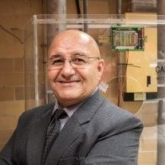New Developments in the Removal of Microplastics and Nanoplastics from Wastewater
A special issue of Water (ISSN 2073-4441). This special issue belongs to the section "Wastewater Treatment and Reuse".
Deadline for manuscript submissions: 30 September 2024 | Viewed by 4032
Special Issue Editors
Interests: development of chemicals and optimization of unit processes for water/wastewater treatment; nutrient removal and recovery from wastewater; degradation of emerging micro-pollutants; environmental remediation
Special Issues, Collections and Topics in MDPI journals
Interests: photochemical reaction engineering, including photocatalysis, UV/hydrogen peroxide, fenton/photo-fenton, etc.; integration of advanced oxidation technologies and biological processes for wastewater treatment; effects of climate change on the quality and quantity of groundwater
Special Issues, Collections and Topics in MDPI journals
Special Issue Information
Dear Colleagues,
The pollution caused by micro- and nanoplastics in water and wastewater is of growing environmental concern due to their slow degradability, the biological ingestion of these plastics by aquatic living organisms, and the plastics’ carrier function of concentrating and transporting synthetic and persistent organic pollutants. As well as micro- and nanoplastics, chemical additives added to plastics during manufacture, which may leach out upon ingestion, will enter food chains and, potentially, could cause humans serious health problems. These wastes normally pass through wastewater treatment plants, and the extent of their removal is critical to setup a first barrier to prevent their inputs into rivers and marine environments. The development of efficient and affordable wastewater treatment technologies and understanding the working mechanisms to remove micro- and nanoplastics are, thus, important steps to protect our water resources, ecosystems and, ultimately, our health.
This Special Issue calls for research articles and review papers on the development of knowledge of the management and the removal of micro- and nanoplastics in wastewater and all relevant research in the area. Potential topics include, but are not limited to, the following:
- Distribution of micro- and nanoplastics in domestic sewage;
- Development of biodegradation processes to treat micro- and nanoplastics;
- Ways to prevent micro- and nanoplastics in sewage sludge from leaking into the environment;
- Development of more accurate monitoring and analysing techniques and methods;
- Advances in the regulations set up to manage the potential pollution caused by the micro- and nanoplastics;
- Reduce, reuse and recycle plastics.
Prof. Dr. Jia-Qian Jiang
Prof. Dr. Mehrab Mehrvar
Guest Editors
Manuscript Submission Information
Manuscripts should be submitted online at www.mdpi.com by registering and logging in to this website. Once you are registered, click here to go to the submission form. Manuscripts can be submitted until the deadline. All submissions that pass pre-check are peer-reviewed. Accepted papers will be published continuously in the journal (as soon as accepted) and will be listed together on the special issue website. Research articles, review articles as well as short communications are invited. For planned papers, a title and short abstract (about 100 words) can be sent to the Editorial Office for announcement on this website.
Submitted manuscripts should not have been published previously, nor be under consideration for publication elsewhere (except conference proceedings papers). All manuscripts are thoroughly refereed through a single-blind peer-review process. A guide for authors and other relevant information for submission of manuscripts is available on the Instructions for Authors page. Water is an international peer-reviewed open access semimonthly journal published by MDPI.
Please visit the Instructions for Authors page before submitting a manuscript. The Article Processing Charge (APC) for publication in this open access journal is 2600 CHF (Swiss Francs). Submitted papers should be well formatted and use good English. Authors may use MDPI's English editing service prior to publication or during author revisions.
Keywords
- distribution of microplastics
- removal of micro- and nanoplastics
- biodegradation process
- analysing methods of micro- and nanoplastics
- legislation
- reduce, reuse and recycle plastics






